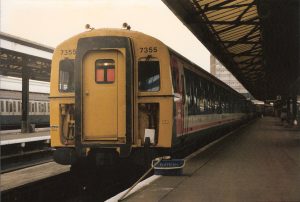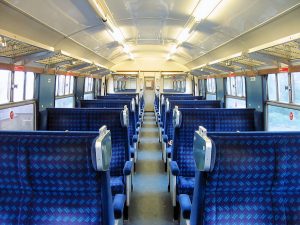Introduction
The Class 421, often affectionately known as the “4CIG” (4-car Corridor-Composite and Interchangeable Gangway), holds a special place in the history of British Railways. These iconic electric multiple units (EMUs) were an essential part of the Southern Region’s commuter network for decades. With their unique features, rich history, and lasting impact on rail transport, the Class 421 remains a fascinating subject for railway enthusiasts and historians alike. In this article, we’ll delve into the world of the Class 421, exploring their development, features, operational history, and enduring legacy.
Development and Design
The story of the Class 421 begins in the late 1960s when British Rail decided to modernize their aging fleet of electric multiple units on the Southern Region. They turned to the renowned British rail engineer Oliver Bulleid, who had a distinguished career in designing locomotives and rolling stock. The goal was to create a new generation of EMUs that could provide efficient and comfortable commuting services for the growing number of passengers in the London commuter belt.
One of the standout features of the Class 421 was its design for both suburban and interurban routes. The units were configured as 4-car sets with two driving motor coaches and two intermediate trailers. These units could operate individually or be coupled together for increased capacity, making them highly adaptable to changing passenger demand.
Innovative Features
The Class 421 was known for its innovative features, some of which set it apart from other EMUs of its time:
- Interchangeable Gangway: Perhaps the most distinctive feature was the interchangeable gangway connection between units. This allowed passengers to move seamlessly between carriages, improving passenger flow and enhancing safety. It was a feature that made the Class 421 particularly well-suited for busy commuter routes.
- Corridor Connection: The Class 421 featured a corridor connection running through all four cars, providing passengers with the convenience of moving between carriages without stepping outside onto the platform. This was especially beneficial in inclement weather.
- Air Conditioning: These units were among the first to introduce air conditioning, providing a more comfortable commuting experience, particularly in the summer months.
- Push-Pull Operation: Class 421s were designed for push-pull operation, allowing them to be driven from either end, eliminating the need to turn the train at terminal stations.
- Streamlined Design: The Bulleid-designed units featured a distinctive streamlined design with smooth, curved edges, making them visually striking and unique among other rolling stock of the era.
Operational History
The Class 421 EMUs entered service in the early 1970s and quickly became a familiar sight on Southern Region routes. They were primarily used on suburban services into London Victoria, London Bridge, and other key stations. Their combination of comfort, efficiency, and innovative design made them a favorite among commuters.
Over the years, they underwent various refurbishments to extend their operational life, including upgrades to their interiors and improved accessibility features. However, as technology advanced and new rolling stock entered service, the Class 421s began to show their age.
The late 2000s marked the end of an era for the Class 421, as they were gradually retired from service. Despite their retirement, their legacy lives on, with many preserved examples in railway museums and private collections. The distinctive design and unique features of the Class 421 continue to captivate railway enthusiasts.
Legacy and Preservation
The Class 421 EMUs left an indelible mark on the history of British railways. They represented a bridge between the traditional railway era and the modernization efforts of the late 20th century. Their innovative design and versatility made them beloved by both passengers and railway staff.
Today, several Class 421 units have been lovingly preserved by heritage railway organizations and railway enthusiasts. These preserved units serve as a living testament to the rich history of British railways and the important role the Class 421 played in commuter transportation.
Preservation efforts often involve painstaking restoration work, ensuring that these iconic trains are maintained in their original condition or returned to their former glory. This dedication to preserving railway history allows future generations to experience the unique charm and innovation of the Class 421.
The Class 421, with its distinctive design and innovative features, holds a cherished place in the hearts of railway enthusiasts and those who commuted on the Southern Region’s lines. From its development in the 1970s to its retirement in the 2000s, the Class 421 played a vital role in the evolution of British railways.
As we look back on the legacy of the Class 421, we are reminded of the enduring impact of innovative engineering and thoughtful design on the world of transportation. These units, with their interchangeable gangways, air conditioning, and streamlined aesthetics, serve as a reminder of the importance of comfort, efficiency, and passenger experience in the world of rail travel.
While the Class 421 may no longer be a regular sight on Britain’s railways, its legacy lives on through preservation efforts and the memories of those who rode these iconic trains. As we celebrate the history of the Class 421, we also celebrate the engineers, designers, and railway workers who made them a symbol of British railway excellence.








